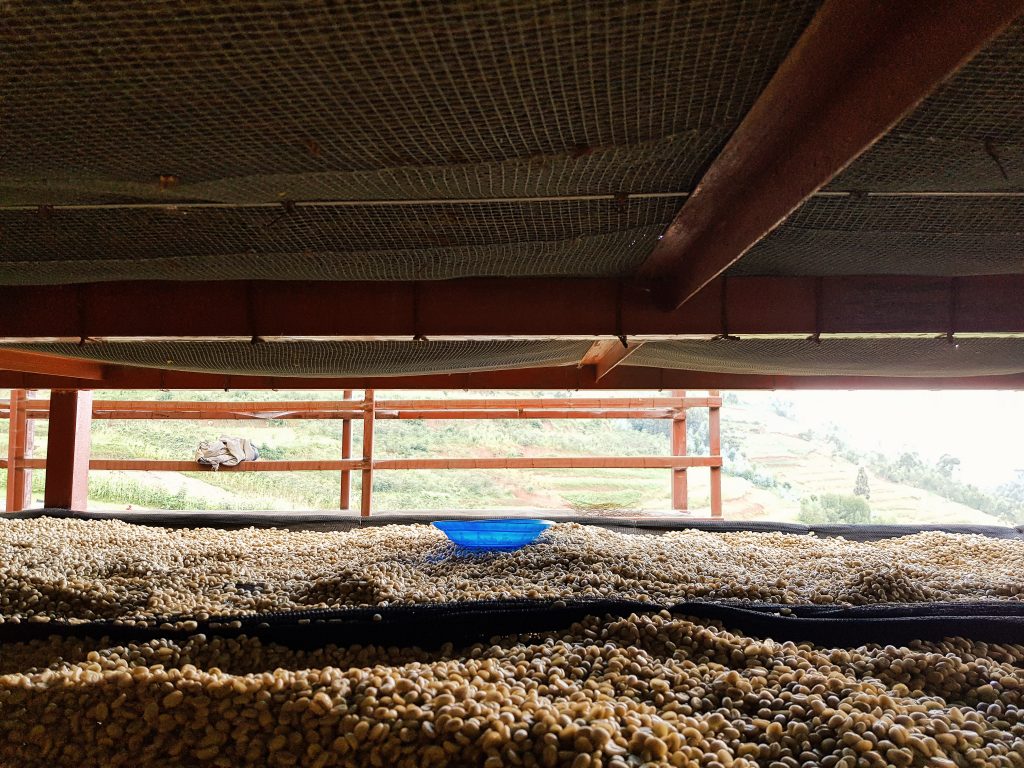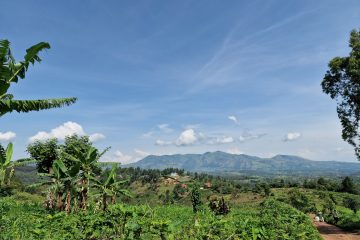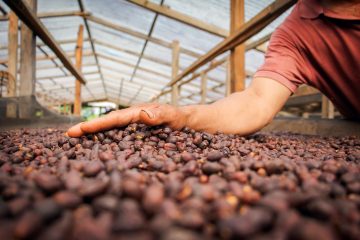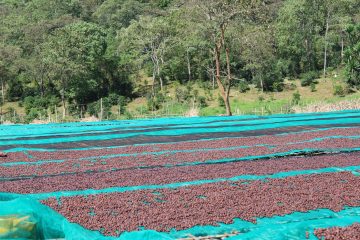It is commonly accepted that the drying phase of coffee production is essential in maintaining the qualities and characteristics that already exist within the bean, and extending the longevity of the product.
Initially coffee parchment will have a moisture content of around 45%, and at this stage the coffee is at high risk of being handled incorrectly. While through drying we would aim for coffees to reach a moisture content between 9.5%-11.5%, this can vary depending on the country and the climatic conditions that the coffee will experience between being milled and shipped. It is critical to make sure that during the drying, the parchment is not exposed to conditions that can damage what exists within the bean. Direct exposure to sunlight puts the bean under very hot conditions, and the cell structure is quite fragile and can risk the parchment and embryo being damaged.
It is common practice in some producing countries (Kenya, Rwanda, Ethiopia) to transfer the parchment after pulping, fermentation and washing to what is called skin drying tables. This is where the very wet parchment is placed on raised beds under a shade structure, and for the first few hours the parchment is sorted intensely, under shade. This is both thought to be important sorting time, as when the parchment is wet you can see more clearly under shade some of the defects and remove them. As well as serving a protective function of preventing the harshness of direct sunlight at the point at which the parchment is most vulnerable. We often see countries employing this strategy to have good longevity of the original cup qualities of the coffees.
Given these observations and our knowledge of the structure of the coffee bean we believe that extending the time coffee parchment is dried under shade can potentially help maintain the qualities of the coffee for longer. We have shared these ideas with a number of producers we work with over the last few years and have seen lots where the parchment has been dried under shade from El Salvador, Burundi and Rwanda. This is not without additional cost to producers, the capacity to dry volumes becomes very limited when you slow down the drying phase and shade dried coffees are taking longer to get to a stable level of water content. In addition in some cases producers are investing in infrastructure to both dry parchment under shade and to do so at capacity. An example of this is the immense steel structure Sam at Buf Coffee Company has built for drying large volumes of parchment on different levels under shade. Salume, our partner in Burundi, has also invested in covered raised beds, and is experimenting both with full shade and partial shade drying.
- Shade drying, Gitessi, Rwanda
- Steel structure at Remera washing station, Buf Coffee, Rwanda
While these coffees can often be much more closed to begin with and take some time to open up in the cup and fully express themselves, we have found that they are maintaining the original cup qualities found for longer than coffees not dried under shade.
Here is a look at what we currently have available for you to try for yourself.





0 Comments